Ricoh Opens Up About its Pentax Film Camera Project and More
![]()
Ricoh chose not to exhibit at CP+ earlier this year, so I took advantage of my extended stay in Japan to visit their corporate headquarters in Ota-ku, Tokyo. (Ota is southwest of central Tokyo, about a 50-minute train ride from where I was staying in Asakusa, on the northeast side of the city.)
- Noboru Akahane, Representative Director and President of Ricoh Imaging Company, Ltd.
- Takeo Suzuki (“TKO”), Product Planning Development, Development Headquarters, Pentax Division, Ricoh Imaging Company, Ltd.
- Ryutaro Aratama, Group Leader, Oversales Section, Business Management Department, Ricoh Imaging Company, Ltd.
- Hiroku Kawaguchi, Product Spokesperson, Business Management Department, Pentax Division, Ricoh Imaging Company, Ltd.
- Kazuhiko Shibuya, Business Management Development, Overseas Sales Section, Pentax Division, Ricoh Imaging Company, Ltd.
In the following, I’ve loosely paraphrased the conversation to make it easier to read for English speakers. The comments from Ricoh, therefore, aren’t in their own words as spoken, so please attribute any inaccuracies to my interpretation of the dialog.
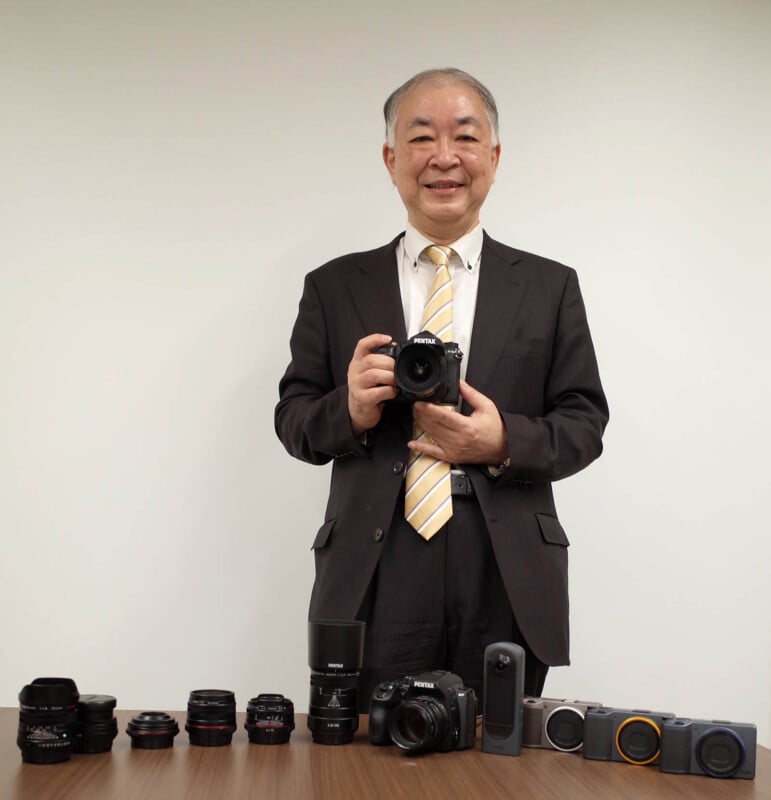
Akahane-san has overall responsibility for the Ricoh Imaging Group, which manages both the Ricoh- and Pentax-branded cameras and lenses. He told me that his return to leading Ricoh Imaging came as a surprise, as he’d been working at reviving a Ricoh subsidiary in India after a massive accounting fraud there.
I did a little Googling and found that this was a big story in India in 2015 and 2016: Insiders apparently cooked the books to the tune of more than $160 million at the then-current exchange rate. He said there had been “false conveyance” and what amounted to a small gang operating inside the company that was behind the fraud. It sounds like a wild ride; he struck me as very friendly and personable but must have a backbone of steel to take on corporate corruption of that magnitude.
It turns out that Akahane-san has actually had a lot of experience sorting out and revitalizing struggling companies: Before joining Ricoh, he’d worked in investment banking, where he was often the person who’d be sent in to sort out companies needing restructuring and redirection. Like most Japanese, he’s very modest when talking about his own abilities, but there’s no question about his turnaround skills.
This is actually his second stint as head of the Imaging Division; he oversaw the development and release of some of the company’s most capable and successful products, such as the K-1 and K-3 when he was last in charge. The photo market is very different now, but I personally have a lot of confidence in Akahane-san’s instincts and abilities. I think his return to the Imaging Division is very good news for Pentaxians everywhere.
Without further ado, let’s dive into the interview:
The Film Project: Not Just About Design, but Supply Chain as Well
David Etchells: I think Ricoh’s announcement of the Film Camera Project last December is one of the most intriguing developments in the industry. After reading the comments on the video featuring Pentax camera designer TKO (Mr. Takeo Suzuki), it seems that many people share my enthusiasm. Some reports suggest that the first step is to determine the feasibility of a new film camera, but from the video, it sounds like you have already made a conclusive decision to develop one. Can you clarify whether you have indeed made a firm decision to develop a new film camera?
Noboru Akahane: We haven’t made a final decision yet regarding selling or not selling a camera. That aspect is still undecided. However, we have already made the decision to embrace the challenge. This challenge pertains to whether we can gather the necessary parts to manufacture a film camera. It’s been a long time since we last developed a film camera, and many other camera companies are in the same situation—they haven’t ventured into film cameras either.
DE: Ahh, so the film camera supply chain…
NA: Yes, there is a significant difference. It’s not just a minor distinction, but a substantial one. Additionally, we need to investigate the stability of the film supply, identify the main film suppliers, and understand the market itself, including the preferences of young people, men, and women. On our side, we need to find the right person who can design a suitable plan for creating a film camera. We need to gather experienced individuals to initiate the engineering process.
DE: So, you emphasize the importance of finding the right people. The older engineers who possess the necessary expertise and the younger engineers…
NA: Absolutely. It’s crucial that the technology is passed down to the younger generation. Even if it turned out that we weren’t able to develop a film camera right now, it’s essential that the technology continues to evolve.
This hadn’t occurred to me but makes a lot of sense. While they’re less complex than digital cameras in many ways, film cameras have a unique set of components, some of which haven’t been manufactured for years now, or only in very limited quantities. Given that it had a sweeping title of “The Film Project”, I had assumed that Ricoh already had a well-developed plan in place. As it turns out, they’re still very much still studying the feasibility of manufacturing modern film cameras. Part of this process involves identifying the right people internally to work on it and recapturing the knowledge of their engineers who have experience with film camera design and manufacturing. We’ll hear more about their reasons for announcing the project so early in the further conversation below.
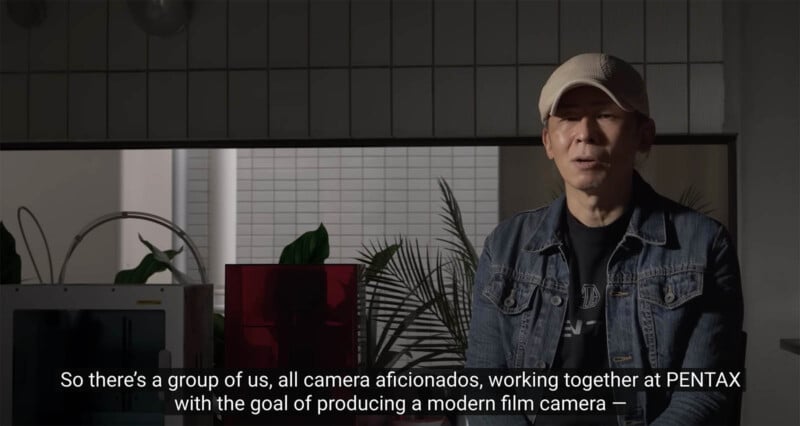
Is Film Still Relevant, in the Digital Era?
NA: But before that, this is maybe my personal way of thinking, but I think film cameras is one of the areas that we need to focus on. We are known as a DSLR company and also make water-resistant cameras, which are popular now, but we are encountering challenges with the shrinking DSLR market. Personally, I love photography and taking pictures, and the DSLR is the only type of camera that I truly love. To explain precisely, I cannot stand having any barrier between the subject and my eye; only light and air should come between them. With mirrorless cameras, the viewfinder adjusts the image electronically, which detracts from the scene I saw that inspired me to take the picture in the first place. It may seem like a small detail, but it’s an important point for me. Given that we are living on this earth with natural air and light, it makes me feel that film cameras are the way to go. This is just my personal feeling, but I don’t think I am the only one who feels this way, an exception. I think there is a range of people worldwide who feel the same way I do.
DE: Yes, as you say, some people will prefer the direct visual experience.
NA: Absolutely, capturing the scene exactly as seen by my eye.
DE: I think one of the attractions of film is that it’s a unique medium. It’s hard to put into words, but taking pictures with film feels different, perhaps because you can’t just rattle off a hundred shots and then select one. There’s also a certain sense of mystery and anticipation about the outcome. When I was young I had a darkroom in my parent’s basement (it was only black & white), and the process of making prints was always very appealing to me.
NA: Do you encounter any limitations in capturing photos during your travels today? In my younger days, when I traveled around the world, I had to carefully consider the number of photos I could take in a day due to the film’s limited capacity, just 24 or 36 exposures. Even though I might see many beautiful places or scenes, I had to choose where I would use those limited frames.
DE: Yeah, somehow it involves you with the image more, because you’re pausing to think about you know, I only have 36, so what am I going to take?
NA: Yes, you need to decide whether to take pictures in the morning or daytime or if you should save some for later in the day.
DE: Maybe you could make a digital SLR that has a counter, so you can only take 36 shots in a day.
NA: But the problem is after taking the picture, how to select the right one.
DE: Yeah, it’s interesting, there really seems to be a resurgence of film with young people, I think even more so than with people our age. There’s an attraction to it, maybe because it’s just *different*, it’s kind of retro, … I can’t quite put it into words, but then, I’m not exactly a young person myself.
NA: Even my younger female relatives in Japan are excited to hear about a new film camera.
DE: As I mentioned, the response to your YouTube video was overwhelmingly positive, there were just hundreds and hundreds of very positive comments.
NA: Yes, I was surprised, honestly.
There’s a lot to unpack here. What is it about shooting with film that makes it unique and appealing, relative to digital? For Akahane-san, a lot of it has to do with the sense that there’s nothing between him and his subject, no complex imaging system rendering a version of the scene to display on an EVF or LCD, but just his eye looking through a viewfinder. For him, the direct connection with the subject is key.
He also mentions the impact of dealing with film’s limited capacity. Unless you have an unlimited budget, you need to think about how you’re going to use your allotted number of shots for the day. Do you burn more of them in the scenic place you are in the morning, and then not have as many left when something even more scenic or fun comes along in the afternoon?
That sort of outside limitation on the number of shots you can take leads you to think a lot more about each one you take. With digital, I’m inclined to just rattle off a dozen shots at a time, figuring I’ll just pick the best one later on the computer, and maybe do a little Photoshopping or re-cropping. Film forces me to slow down and actually think about the picture and how I want to take it.
But I can see Akahane’s point as well; modern EVFs are phenomenal, often showing detail you can’t see with your naked eye, especially in low-light conditions. But there’s a level of reality and connection with the subject that I see when looking through an optical viewfinder vs an EVF. It’s possible it’s just nostalgia, and happy memories of many hours of shooting with my film SLRs when I was younger, but there’s a je ne sais quoi about the film experience that’s just different from digital.
How Did the Film Project Come About?
DE: I’m interested in how this project came about. TKO-san is the face of the project and is in charge of product planning and design for it, but did the idea originate with him? How did it come about inside the company? What previous designs was TKO involved with?
Kazuhiko Shibuya: This project was initiated by TKO-san. When he first proposed the idea internally, it took everyone by surprise, causing a momentary freeze. However, as he explained the film camera market’s background and our position in it, the realization dawned that this was something we should pursue. Gradually, people began to agree, and support for the project started to grow. Eventually, there was an optimistic feeling that the project could go well. At that point, we involved top management for it to go forward.
DE: TKO-san, what previous designs were you involved with, what projects had you worked on before this?
Takeo Suzuki (via KS): There have been various designs, including the Pentax K30, Pentax MX1—the compact camera with brass on the surface— the WG series, the waterproof cameras like WG 90, WG1, and WG2. I also worked on the Pentax J limited series, which consists of special edition models starting from KP.
DE: The J series were kind of limited edition models?
KS: Yes.
DE: I’m not actually familiar with the J limited series, but I’ve been in the industry so long that I immediately remember “Oh yes, the WG1”…
The way the Film Project came about is at once both unusual and typical for Japanese companies. For the most part, Japanese business tends to proceed more through group consensus rather than individual action than is typical in the US. It’s unusual for individuals to stand out, especially to push a new or potentially unpopular idea. On the other hand, significant advances can usually be traced to the passions of key individuals, rather than committee deliberations.
This was the case with the Film Project; engineer Takeo Suzuki (“TKO”) had what was initially a startling and radical idea: Why not a film camera again? It apparently took some explaining and convincing, but gradually others came on board, and my impression is that enthusiasm for the project is now widespread.
DE: Do you have any numbers for how many photographers are currently shooting film? What is their demographic makeup, in terms of age, gender, etc? Are there any geographic differences? (That is, are there more film shooters in one area of the world vs another?) Do you have a sense of what percentage of the film-photography market is currently using Pentax gear?
KS: Actually, we don’t have precise information on the size of the film camera market because most camera manufacturers transitioned to digital a long time ago. As a result, current market data is not readily available. However, we conducted market research in Japan involving approximately 3,000 users. From this research, we discovered that about 20% of all camera owners here have a film camera (excluding disposable cameras).
DE: So, roughly 20% of photographers who currently use digital cameras also own a film camera?
KS: Yes, that’s correct. However, we don’t have specific information regarding the percentage of film photographers who use Pentax gear. Nevertheless, we’d like to offer the first film camera experience to younger individuals who have recently become interested in film photography, in addition to serving existing film camera users.
An interesting point: How do you get market data for a product that hasn’t been sold for a couple of decades? Not only that, but the market was entirely different back in the early 2000s. Consider that the first iPhone only went on sale in June of 2007; people’s relationship with images and cameras is entirely different now. It’s safe to say that no one has any idea just how popular (or not) a modern film camera would be.
Do You Have Any Market Information From Film Manufacturers?
DE: This is skipping ahead in my questions a bit, but you mentioned that you’re collaborating with film manufacturers. Have they been able to provide any insights into the volume of film being sold and the demographics of film users?
Hiroku Kawaguchi: We don’t have direct information from the film manufacturers, but there are dealers and distributors who sell film, and we have been trying to gather information through them.
DE: I’d think that the film manufacturers themselves would have some understanding of their market through their own market studies. But then I haven’t seen much film marketing myself, so I don’t know where they’re reaching out to find potential customers.
HK: Yes, we are working to obtain such information from the film manufacturers.
DE: It seems that you are still in the process of understanding the market landscape. One of my questions was about the typical Pentax film-camera buyer, but it sounds like you’re just now working to discover that.
KS: Yes, you’re correct. We don’t have clear information on that aspect at the moment.
Will Having New Cameras Available Increase the Appeal of Film?
DE: As TKO said, it’s becoming more and more of a challenge to keep film-era cameras functioning properly. Do you think having a modern camera system available with a full warranty and parts availability would significantly increase the number of film shooters? (I have to admit that the idea of holding and using a brand-new film camera is enough to make me think of dusting off my old darkroom equipment! :-)
KS: Yes.
HK: For sure.
KS: We think that new models will contribute to an increase in the market. Our focus is on how younger individuals can enjoy shooting with film, with a sense of security. The reliability of film cameras has become more challenging, especially as film prices rise and older products tend to break down. By offering a durable and repairable camera with a warranty, we aim to provide users with a sense of security. We believe this would be a significant advantage for both users and ourselves.
DE: It’s interesting because this is a market where there’s virtually no competition, other than used models available on platforms like eBay.
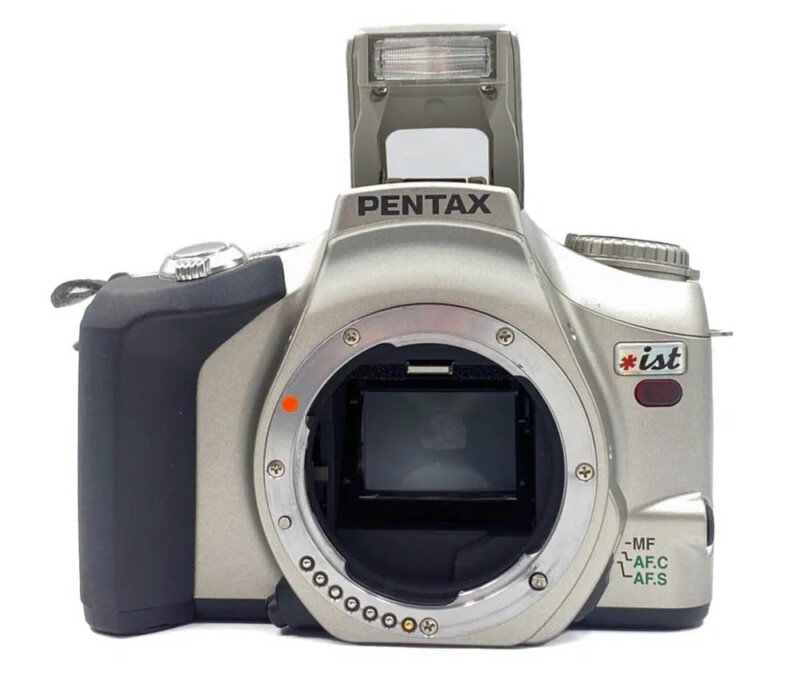
What will a modern film camera look like?
DE: Beyond just having a newly-manufactured body, photo technology has come a long way since the days of the last Pentax or Ricoh film camera. (I think the last Pentax film body was the *ist, correct? correct?) What sorts of new features or improved performance might we see in new film cameras from Ricoh? What’s your vision of a modern film camera?
KS: Unfortunately, we are unable to provide specific information about the product’s specifications. However, what we can say is that we aim to develop cameras that people can enjoy using casually and carry with them anywhere. It will be a camera that allows them to experience the pleasure of using it every time they pick it up. But I apologize that we don’t have detailed answers about the specifications.
DE: It occurs to me that with advancements in technology, the new film cameras could be much easier to use. Autofocus could be more accurate and faster, and exposure control could be more intelligent. That last was always a challenge with film. One of my personal frustrations was trying to take very low-light exposures with film; I had no idea what the exposure was going to be like, so I’d have to bracket and use half a roll just to make sure I had one good shot. Modern technology should make it much easier to get good shots in challenging conditions.
NA: Deciding on that aspect is quite difficult. What I would like to express is that some level of uncertainty after taking a picture is necessary to capture the essence of film photography.
DE: So, if there’s a bit of a gamble involved, if there’s some uncertainty, that’s part of the film experience?
NA: That’s right.
To me, the question of what a modern film camera might look like is intriguing to consider and exciting to contemplate. Consumers these days have *very* high expectations for what a camera should be able to do, so a simple box with a lens on the front and a shutter button on top won’t cut it. Users won’t accept poor-quality images just because they’re using film; they’ll expect perfectly-exposed and -focused images with a “film look” to them. While filters that create an “old-timey” image with vignetting and soft corners are popular, I don’t think people will want to shell out their hard-earned cash for a camera that can only deliver that.
It’ll be interesting to see what Ricoh comes up with and how they go about achieving it. Will old-fashioned AF systems be good enough, or will people be disappointed if the camera can’t find and focus on a subject that may not be dead-center? Probably not.
The engineer in me is curious to see what Ricoh comes up with to meet these expectations. A successful solution is going to require some out-of-the-box thinking.
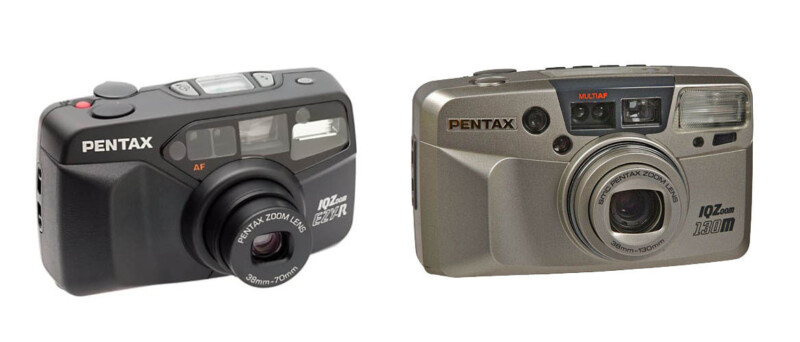
What Are Your Plans in Terms of Types of Camera Models? (SLR, Compact, etc.)
DE: TKO mentioned that there will be a range of new film cameras. From what I understand, the first model we’ll see will be a compact camera, with SLRs potentially coming later. Can you provide more details about your plan for our readers? Which models might come first, second, and so on?
KS: Currently, our main focus is on developing and releasing the first compact camera. That is our primary goal—bringing that product to the market successfully. Once we achieve that, we can consider the next steps. We’re developing the current compact camera so we can use the know-how and functions in future products.
DE: Yes, there’s a saying that you have to walk before you can run. So, it’s important to concentrate on getting the first camera right before you go off exploring other possible models and directions.
NA: This approach represents a new strategy for entering the market. Usually, most camera manufacturers announce a new product just a few months before its actual release for sale. However, in this case, we haven’t decided on the sales date. It’s more about communicating with potential users. The market discussion can influence how we develop the product. So, let me ask you: Have you ever experienced this kind of marketing approach?
DE: No, I don’t think I’ve ever seen this before, certainly not so early in a product’s evolution.
NA: We haven’t made a final decision yet, but we wanted to challenge ourselves with this product development.
DE: I think your early publicizing of your plans is very positive because it creates a dialogue between you and potential users. It gives people a sense of collaboration and ownership, where they feel involved in the process.
NA: That’s one of the changes from the old Pentax to the new. Co-creation with the users is one of the key aspects.
I have mixed feelings about the decision to begin with a compact film camera, rather than reviving a film-based SLR design. On the one hand, I understand the need for Ricoh to walk before they run, and a simpler compact-body design will be easier to manufacture. On the other hand, it seems to me that the people who’d be most likely to be seriously into film would be enthusiasts, who’d like to use interchangeable lenses.
The more I’ve thought about it though, the more I think Ricoh is on the right track with the compact-first strategy. Enthusiast shooters can easily (and cheaply) scratch their film itch by buying used gear on eBay. There are tons of film bodies available at low cost, many still in fine shape. Were Ricoh to simply come out with a newly-manufactured *ist body, chances are a lot of the people most interested in it would already have satisfied that urge by buying a used Ricoh or Pentax film body for under $100. On the other hand, a new compact film camera would appeal to everyone from Gen-Z on up, photo enthusiasts included. Smart call, I think.
Can US Users Contribute Ideas and Feedback for the New Concept?
DE: Yes, I can see that. Along those lines though, I’ve heard a lot from U.S. users who want to feel included somehow.
NA: Yes, indeed. I feel sorry about that. Although we receive many comments from U.S. users and film enthusiasts, we haven’t been able to establish a direct channel to communicate with all of them over there. This is my headache, we’re trying to think of how we can address this.
DE: Perhaps even if it was just one person or a group that could have a presence on platforms like Facebook… I’m just thinking out loud here. What if you could announce that you’ll have an online discussion or something similar? I understand that it might be challenging…
NA: Even if we receive numerous comments from users, we might not be able to respond to them all easily. We don’t want to create any frustrations for the end-users, but there might be some if we ask for input, but then can’t answer everything. Communication is so important, and we need to incorporate as many comments as possible into the development of our products. Some of them just won’t be possible though.
How Are You Reaching Potential Users, to Study the Market?
DE: So within Japan you’re having this dialog, what form does that take? How do you interact with users? Is there something like focus groups?
KS: TKO and the product planning team sometimes visit film camera stores to hear what people are thinking. We also receive contacts from photographers through Instagram. Additionally, we have a showroom in Tokyo where customers can visit and engage in discussions. Sometimes we also attend photo art school exhibitions, and lately we’ve been active on social media. Users often leave comments and requests on social media, not just about specifications but also asking for successors to old models.
DE: Ah, so some people are looking at the *ist for example, and asking for a 2023 or 2024 version of it?
KS: Also, we check the comments on social media very frequently. And indeed there are more comments from overseas markets for the first video we posted on YouTube about our film project. So actually we do read all the comments on social media.
NA: We incorporate both online and offline events here in Japan. We gather Pentax GR users and create enjoyable events, not just focused on teaching people how to take pictures with their cameras but for them to simply have a good time together. As for our showroom, the concept has changed dramatically from the previous one. Until last year, our showrooms in Tokyo and Osaka mostly had space for photo galleries. However, the new showroom that opened in July last year has a clubhouse concept. It’s a place where people who love Pentax and Ricoh cameras can gather and have conversations. The development staff and engineers are present there, so if there’s something someone wants to share with us, they can. It’s like a casual chatting space though, not like a traditional showroom concept.
DE: Where in Tokyo is it located?
NA: It’s in Yotsuya, near Shinjuku. We decided to close the previous showroom in Shinjuku and relocated to this new space with the new concept.
DE: I understand that language barriers can make casual interactions challenging, and it’s also a matter of practicality. As much as you might want to do something similar for the US consumers, it just wouldn’t be practical to create a clubhouse in a place like New York for example. Even if you made one, there’d be no way for product planners and engineers to just drop in on it, and there’d be a language barrier on top of it. It’s a tough problem, I wonder if there’s any way I might be able to help facilitate it? I’ll give it some thought…
NA: TKO says that he sometimes visits universities with photography programs and interacts with students there.
This is a complaint I’ve seen from a lot of US users online. A lot of US Pentaxians would like to participate in the feedback process but don’t have a forum to do it through. For Ricoh’s part, I understand their dilemma, because their location in Japan makes it easy to interact one on one with users there, and the language barrier makes dialog with US users all the more difficult.
Here’s a question I’d like the community to give me some feedback on: Could I possibly play a role in facilitating feedback and communications? I obviously have a lot of background in photography and interacting with English-speaking photographers online, and have had a lot of exposure (no pun intended) to manufacturing processes from my years of interacting with engineers in the industry, factory tours, and my original engineering background.
Perhaps I could act as a kind of a proxy or interface between Ricoh/Pentax and the English-speaking photo community. I don’t know exactly what it might look like, but could imagine talking with the Pentax engineers and product planners, to understand the feedback they’ve received so far and their thoughts on it, summarize and present that to the US user base, dialog with you-all to get your feedback, then summarize and bring it back to the engineers in Japan. This could happen in an open forum, or there might be a private space in which more proprietary ideas could be discussed. – Or maybe a combination of both.
What do you think? Would you be interested in being part of a group where you know that your input and comments would be taken directly to the Pentax engineers, and their responses communicated back?
Ricoh/Pentax clearly wants to hear from US and other English-speaking users but doesn’t currently have any way to make that happen, and US users want to contribute but feel frustrated and shut out. Are there any committed Pentaxians reading this? Please let me know what you think of setting something like this up, and whether you’d be interested in contributing.
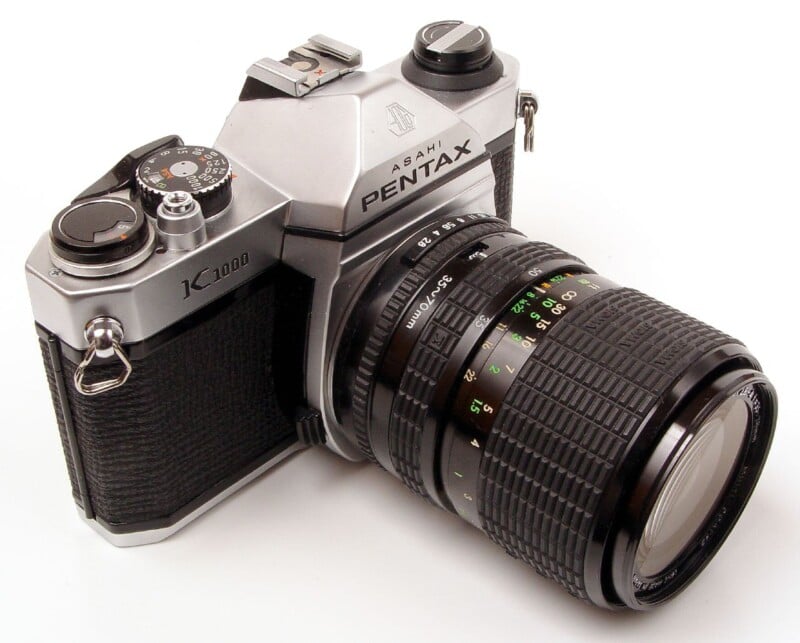
What Sort of Special Skill or Knowledge is Needed to Design Film Cameras?
DE: TKO mentioned that the skills and knowledge needed to make a film camera are much different than those required to make digital models. I feel it’s so important to preserve prior-generation knowledge and experience before it fades away. What sorts of special knowledge do Ricoh’s senior engineers have that’s essential for producing film cameras? (Also, I was interested to hear TKO describe some of the meetings
between the young and old engineers as “heated” – what were the points where the older and younger engineers disagreed?)
KS: Building a single unit of a film camera may be achievable, making one or more special mechanical parts, but when it comes to mass production, each unit must meet a certain level of quality. It’s hard to find the best fine-tuning method just based on design documents. For instance, there was a component that we didn’t understand why it was there. So we were about to remove it, but then we learned from the advice of one of our retiring engineers that it is actually an essential component. So it’s not so much a conflict between young and old engineers, but rather differences in interpretation of drawings or assembly methods. Both young and old engineers actively discuss how to achieve positive outcomes.
DE: So in other words, while you can design something mechanically, knowing what the factory is capable of producing reliably comes from experience in working with the manufacturing process.
I hadn’t thought of this, but it’s no surprise; there are a lot of mechanics in a film camera that either don’t exist or are different from what’s in digital cameras. It’s interesting to me that a capable mechanical engineer but one lacking specific experience with film cameras could look at a set of drawings and think that a part was superfluous that was actually critical.
Is There Tension Between Younger and Older Engineers?
DE: I was interested too, that TKO said that some of the meetings between young and old engineers were heated. “Heated” sounds like there were knocking heads (gestures, laughter) and disagreement. What sorts of, where were the points that there was that tension?
TKO (via HK): It’s not so much a conflict of different opinions. The younger generation of engineers doesn’t have a knowledge of film, so they simply don’t know how the mechanics should be. So it’s more just about less experience vs more experience.
DE: Ah – so it’s not so much arguing about things but just communicating knowledge that the younger engineers don’t have.
KS: Exactly, it’s not about arguing, but rather the younger engineers learning from the older engineers. It’s not a conflict, but a matter of knowledge transfer.
NA: It’s also a matter of different approaches and ways of thinking. When starting to develop digital cameras, the younger engineers tend to focus on one area and then expand from there. But the older engineers say no, no, you need to start from this area. This can be hard to explain. The way of thinking and the steps of development are basically different.
DE: So it’s about understanding the starting point and the underlying principles.
NA: Yes, exactly.
Are You Working With Film Manufacturers?
DE: We touched on the film manufacturers earlier, but I want to hear a bit more on that topic. You mentioned in passing at one point, I think in another interview, that film is gradually disappearing and the processing for them as well. You mentioned that you might work with film manufacturers to expand the options available for end users. Can you say anything about discussions you might have had with film manufacturers, or is that still in the future?
KS: Unfortunately, we cannot provide specific details at this time. However, our intention is to establish connections with all the companies involved in film production and distribution. It is crucial for the film market to expand and thrive.
DE: It seems logical that film manufacturers would be interested in collaborating with you, as it would benefit both parties by increasing the number of film users…
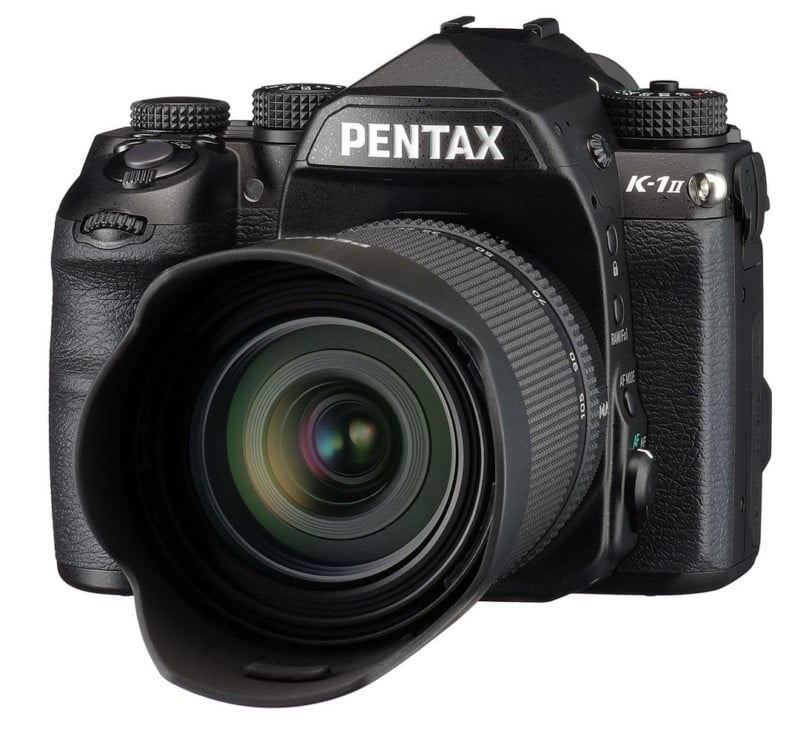
Is the Film Project “Stealing” Resources From Your Digital Designs?
DE: Of course, with all this talk of film, many of your digital users are concerned that it might detract from developments on the digital side. While you’ve said that you have no intention whatsoever of moving away from digital, what can you say to users concerned that the Film Project will drain critical resources from your digital product line?
KS: Actually, the impact on digital cameras from the film project is not so big. We don’t have to pull a lot of resources from digital to work on film. Film cameras don’t have things like sensors, LCD screens, or firmware in them, so we can develop them with minimal engineering resources. It’s not a major burden, really.
DE: So, the engineers working on sensors, processors, firmware, and all that stuff, they’re not being heavily involved in the film project.
NA: That’s the point of difference between the younger and older engineers, and their way of thinking. When the younger generation starts developing a digital camera, they first focus on the sensor—how many pixels, what type, and so on. Then they move on to other components. But starting a film camera follows a different process. It’s not a conflict, just a different approach.
DE: I see. So, the film project isn’t drawing from the same resources needed for digital. Right now, it’s more about understanding the requirements and priorities for the film camera project.
NA: Exactly. It’s about deciding what comes first, what comes next, that sort of thing
This is a concern I’ve seen online and one I’ve had myself. The Ricoh/Pentax camera division is a really small manufacturer compared to the industry giants, so they have to be frugal with their engineering resources. Akahane-san’s answer makes sense, though, especially given the stage of the process they’re at. Right now, they’re very much in the definition and feasibility phase, and the research needed to source components is unlikely to be more than a very part-time job for an engineer or procurement specialist.
When they’re ready to move on to the actual design of a product, it still won’t be nearly as labor-intensive as designing a new digital camera body: There’s no sensor, EVF, memory card interface, image processor, etc. to design, layout, and write firmware for. Sure, there’ll be some sort of microprocessor inside, but the electronics of a film camera are orders of magnitude less complicated than those of a digital camera, and the development effort for a film camera will be small as a percentage of Ricoh/Pentax’s overall product engineering.
What About Updates to Your Digital Lineup?
DE: Let’s talk about your digital line. When the K-1 was launched in early 2016, it impressed us with its build quality and features like multi-shot high-res mode, built-in GPS, Dynamic Pixel Shift Resolution, Astro-Tracer, and the unique virtual low-pass filter using the image-stabilization actuators. It was highly competitive in its price range. Since then though, competing products have significantly advanced their capabilities. Can you provide any insights into the plans for the K-1 going forward? I understand you can’t share specific details, but can Pentaxians expect an updated model in the near future? (There are many comments online from Pentaxians expressing their anticipation for a new full-frame body.
KS: Yes, we are aware that users are eagerly the next advanced model. We aim to create a camera that meets their high expectations and exhibits a high level of perfection. We are continuously working on technological development. However, I’m sorry to say that we cannot disclose when the new model will be available. In the meantime, we will continue to improve the satisfaction of current owners by providing services that enhance the performance of the cameras they currently own.
DE: Ah, such as firmware updates for the existing cameras?
NA: Yes, that’s correct. It may not be the ideal answer, but it is the right answer at this moment, I believe.
DE: So it’s safe to say that you are working on updates for the K-3 Mark III and the K-1?
NA: Yes, indeed. As the market continues to shrink and we face competition from other major camera manufacturers, we need to focus on our advantages and technological strengths. We are always considering what sets us apart at this stage.
DE: That’s reassuring. I think current K-1 owners will appreciate that. It’s an important point.
NA: The only challenge is that we can’t provide a specific timeline.
DE: Of course, but at least they understand the strategic approach you’re taking.
As it turns out, Ricoh has more than kept their word on this front: In the time since my meeting with them, they’ve released no less than four firmware updates across multiple bodies and three updates to desktop/camera connection software.

Can Ricoh/Pentax Keep Pace With the Latest Technology?
DE: Modern camera development is a very complex and costly process, and in the mirrorless world, things like AI-based subject recognition and tracking have become important features. Ricoh/Pentax’s small market share means you don’t have the R&D budget to match your larger competitors. Given that, what’s your strategy to remain relevant in the market? What is Pentax’s niche that will ensure its long-term survival? The Film Project seems like an important (and unique!) direction, but how can you keep pace in the digital world?
KS: The K-3 Mark III also has AI-based recognition and tracking capabilities. Even when using the optical viewfinder, the camera can detect subjects like people’s eyes or birds in flight using information from the autoexposure sensor.
DE: Ah, so the autoexposure sensor has enough resolution to do eye detection. Got it, interesting…
KS: And also, the K-1 is equipped with functions that use deep learning to recognize subjects with high accuracy and automatically select the custom image setting. We always focus on the usability to make the shooting experience more comfortable. So mechanics is important for us in development, even in the digital era. Pentax has also developed unique functions like astro-tracer, thanks to our unique electronics technology. Our goal is to continue being a manufacturer that offers exceptional and innovative features.
DE: So you believe you can introduce unique functions that others may not have considered or incorporated.
In my mind, this is the key question when it comes to their future viability. I was pleasantly surprised to hear that they’re actually already using machine learning for subject identification, working from the autoexposure sensor. (If I’d refreshed my memory by looking at my former company’s own review of the K-1, I would have seen that it sported an enhanced Real Time Scene Analysis system.)
I don’t know the resolution of the AE sensor in the K-1 or other models, but it’s likely quite a lot less than that of their main image sensors. This means that they’ll be limited in how small subjects can be within the frame and still be properly identified, but the basic capability of AI-based subject recognition is there nonetheless. (There are other trade-offs between DSLRs and mirrorless cameras when it comes to autofocus, but a full treatment of pros, cons, and likely advances that could be brought to DSLRs would be as long as this entire article, so I won’t attempt to address any of that here.)
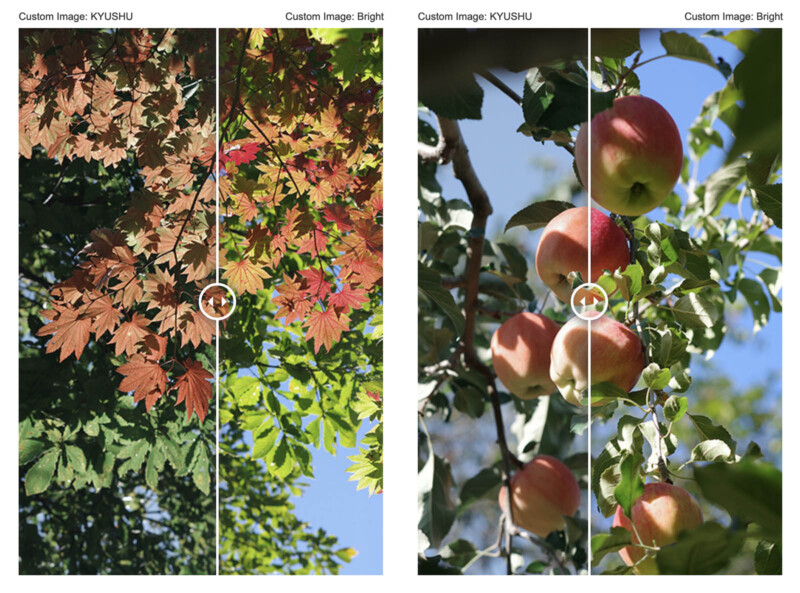
What’s the Story With the New “special-edition” Custom Image Modes?
DE: You introduced the KF as an upgrade to the K-70 last year, and its new Custom Image modes caught my attention. In addition to the wide range of general-use Image Modes, I found the Special Edition FUYUNO, KYUSHU, and KATEN modes intriguing. These modes are exclusively available with specific Limited-series lenses. Each mode is designed to work with a unique set of lenses, without any overlap between them. The KF body supports the FUYUNO mode (the KYUSHU and KATEN modes are pre-installed), while the K-1, K-1 II, and K-3 III support all three modes. Why are these modes only available with specific lenses? Are they simply meant to encourage people to buy different lenses, or is there another reason behind it?
KS: We want users to see these custom image specializations as a gift for those who purchase the special edition lenses, rather than an additional function of the camera body. By applying image tuning to maximize the unique rendering characteristics of each lens, you can achieve expressions that cannot be obtained with general custom image modes. We have limited the combinations in order to allow users to fully enjoy the synergistic effect of combining the lens and custom image. By combining the lens’s distinct rendering with the custom image function, we want users to understand that changing the lens is not just about changing focal length, but also an important factor in enhancing the enjoyment of shooting and stimulating the photographer’s imagination.
DE: Hmm, that’s an interesting answer. I was just thinking “Well, maybe it’s just a way to get people to buy lenses”, but it can also be seen, as you say, as a lens feature that’s in the camera now, or as you say that it’s a gift to people who buy those lenses.
KS: When you attach the 43mm lens, KYUSHU appears in the custom image menu. If you change to the 31mm lens…
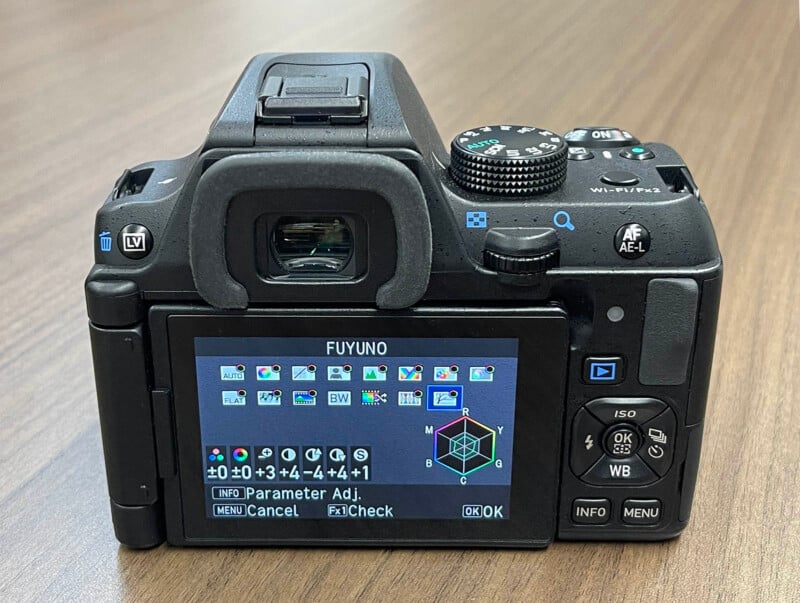
DE: So KYUSHU shows up with this lens, but when you use a different lens, you see a different option.
HK: With the 35mm macro lens, you see a different custom image option. [Further Japanese conversation, swapping lenses]
HK: Today is March 7th, right? In two days, we will announce another custom mode.: This is the new mode we will announce in two days for spring, enhancing the pink color when photographing Sakura (cherry blossoms). [This mode is called “HARUBENI”, it boosts pink tones and lightens blue hues, to make Japan’s famous cherry blossoms stand out in photos.]
DE: I can wait for the announcement, but does it work with the 77mm lens and some other lenses as well?
HK: Yes, there are two lenses that are compatible with the Spring version.
All of the Custom Image modes work with the K-1 and K-1 Mark II, the K-3 Mark II, and the KF bodies. Here’s a breakdown of which modes are available with which lenses:
HARUBENI:
HD PENTAX-FA 77mmF1.8 Limited
HD PENTAX-DA 20-40mm F2.8 ED Limited DC WR
FUYUNO:
HD PENTAX-FA 31mmF1.8 Limited
HD PENTAX-DA 35mm F2.8 Macro Limited
KYUSHU:
HD PENTAX-FA 43mmF1.9 Limited
HD PENTAX-DA 21mmF3.2AL Limited
HD PENTAX-DA 40mmF2.8 Limited
HD PENTAX-DA 70mmF2.4 Limited
KATEN:
HD PENTAX-D FA 21mmF2.4ED Limited DC WR
HD PENTAX-DA 15mmF4ED AL Limited
Of course, anything a company does is intended to make money, so of course Ricoh is hoping that their Special Edition custom image modes will lead to more lens sales.
I suspect a lot of Westerners like me will look at the Special Edition image modes and just see a gimmick to sell more lenses. They aren’t physical objects, just firmware running in the camera. There’s nothing about them that requires the lens to make them work, so the decision to tie the modes to certain lenses seems artificial.
If Ricoh chose to bundle a polarizer or some color-effects filter with the lens, we’d probably feel differently. In that case, the freebie would be a physical object, so we’d be less likely to view it as an artificial tactic.
I’ll admit that I came to the conversation thinking of the Special Edition custom image modes with just that mindset, but the more I’ve thought about it, the more comfortable I am with the framing Akahane-san proposed – gifts to users of the lenses involved. I wouldn’t buy a Limited lens just because it unlocks a Special Edition custom image mode, but I’d appreciate the special mode if it was there. At the same time, I don’t see myself out shooting with a K-1 and feeling cheated somehow because I can’t use KYUSHU mode with my 24-70mm. Would I chafe over time at not being able to use KYUSHU with other lenses, if I really liked it? Maybe, but I don’t feel as strongly as I initially did about this “digital bundling”.
But I’m almost certainly not a typical Pentax shooter, and I’m curious about how Pentaxians feel about this. What do you think of having special image modes tied to certain lenses? Leave your comments below; I’d really like to hear your thoughts, and if there’s enough feedback to warrant doing so, I’ll pass it along to my contacts at Ricoh.
You’ve Done Well With Updating Lenses, What’s Next There?
DE: I find it encouraging that Ricoh has continued to release new lenses every year (a total of 10 new models in the last 4 years) and some users agree with me, but others are clamoring for more updated models. Do you have a roadmap for planned lens introductions that you could share with our readers? What new or updated lenses are most requested among your users?
KS: We can’t disclose the complete roadmap for interchangeable lenses; unfortunately, we can’t share it at this time. However, it’s worth mentioning that many of the lenses users request are already best-selling lenses for other companies. We believe that our lens lineup should also have a unique identity. We’re considering reaching out to users to share our ideas and gather their opinions, especially if there are high-priority requests from many users.
DE: So, it sounds like there will be opportunities for users to provide input at some point. As we talked about with the Film Project, it would be great if there’s a way to include feedback from US users as well… [Here again, I’m wondering if there might be some way I could facilitate such a dialog.]
DE: Once you’ve had these discussions and gathered user input, will you then release a roadmap showing the upcoming lenses and their release dates, or will it be more of a case-by-case basis as each lens is ready for release?
NA: We are of course always thinking about the lens roadmap and future plans. There will be something in the near term [ed. Note: Probably the 50/1.4 released in mid-May], but basically we are reshuffling our lens strategy completely right now, we are aiming to create a unique and distinct lens lineup for the future. That’s why we are not sharing a lens roadmap at this time. Even though it may not be until sometime in the future that we have our complete strategy, it’s possible that there may be some information released sooner than that.
DE: Nearer to the release date.
NA: Yes, that’s our position for the moment.
DE: Your overall approach is interesting to me. While users are requesting updates for commonly used lenses, you already have lenses that cover those focal length ranges, even if they might focus a little slower, for example. You want to give people unique reasons to own a Pentax and shoot Pentax.
NA: Exactly. Why are you choosing Pentax? That should be more and more clear, that is our strategy now. We aren’t a giant manufacturer, so that is why we want to do something that makes that clear.
DE: That makes a lot of sense.
Pentax has always been known for having great glass; they were an early innovator with anti-reflection coatings (their Super Multi Coating or SMC anti-reflection technology was a real breakthrough when it was introduced in 1971), and have always offered a broad range of lenses including a rich assortment of primes.
For years, they’ve maintained a steady flow of 2-3 new lens designs per year, with no less than five new models in 2021. The pace slowed in 2022 though, when we saw just a single new model, a 100mm f/2.8 macro, and so far this year we’ve seen a recasting of their 50mm f/1.4 design in two versions, one with modern coatings and the other with the classic SMC tech for a nostalgic look.
Per Akahane-san’s comments, they’re currently rethinking their entire product line. Rather than updating a more or less standard lens with the latest and greatest technology, what could they bring to their users that would be unique to Pentax?
I think this is a smart strategy. Would someone pick one manufacturer over another just because they had a particularly spectacular 15-30mm f/2.8? – I suspect not. On the other hand, someone who was really into macros might see an outstanding wide-angle macro zoom as a reason to get on board. I don’t know what sorts of lenses this approach might turn up, but I think Ricoh is smart for asking the question.
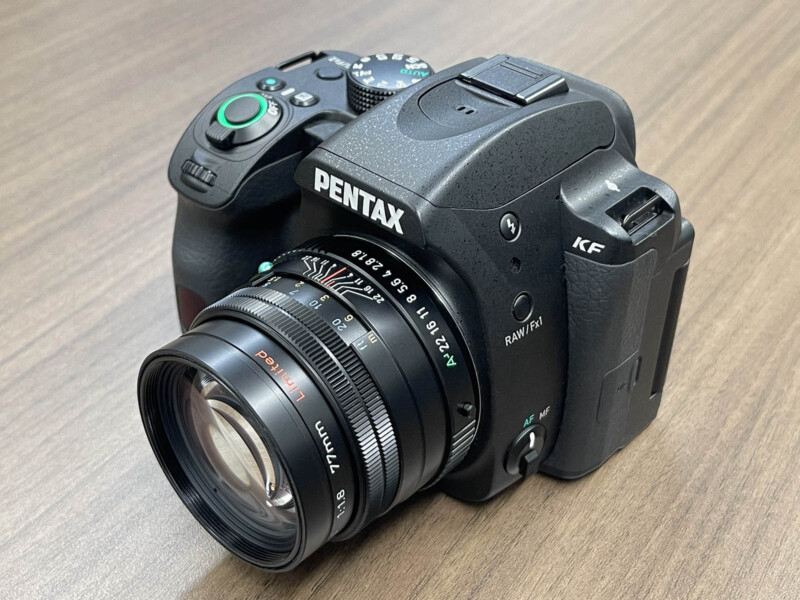
How About Lens Updates With Faster Focus Motors?
DE: On the lens front, I don’t want to get too far into specifics, but there’s a strong general interest in updated designs with faster focus motors, and many, many users are looking for an update to your DA* 50-135mm f/2.8 model in particular. Can you offer them any encouragement that such a lens might be coming? Do you plan to introduce new versions of older lenses with faster PLM focus motors?
KS:
DE: Ah, I understand, you can’t just drop it into an existing design, you need to arrange the optics, and the focus group needs to be smaller or whatever. Got it.
DE: I think that’s all my questions, thank you very much for your time! All: Thank you!
Summary
This ended up being a very lengthy interview, as it’s the first opportunity I’ve had in a long time to speak to top Ricoh management, and the Film Project could have made an article all on its own. It was an interesting discussion, particularly given Akahane’s return to head up the imaging division again.
Here are some bullet points on what we’ve learned:
- The Film Project to develop a modern film-based camera is still at a very early stage.
- The Film Project began in the mind and heart of one of their engineers, Takeo Suzuki (“TKO”). It took some selling on his part, but management all the way to the top level is now onboard and enthusiastic.
- They’re soliciting feedback from photographers, to understand what people want and expect from a film camera.
- They’re trying to understand the level of potential demand, but it’s very difficult because it’s been almost two decades since mainstream film cameras were last sold. (Other than disposable cameras, which are an entirely different market segment.)
- They’re evaluating whether supply chains still exist or can be recreated for film-camera components.
- They’re working to transfer knowledge about film camera design from the older generation (including some engineers who are already retired) to the younger generation to carry it forward.
- The knowledge needed for film camera design mainly involves non-obvious mechanical elements.
- The first model will be a compact camera, not an ILC/SLR.
- I asked Akahane-san what the attraction of film photography was. For him, it’s about having nothing between him and the subject but air and glass. Even an excellent EVF display still involves a computer interpreting a scene, rather than him connecting with it directly. (I suspect this is a feeling a lot of film enthusiasts can identify with.)
- Ricoh has been collecting feedback on the Film Project from photographers in Japan, where engineers and product planners can easily interact with them. They’d very much like to have similar feedback from the English-speaking world, but the language barrier and physical distance kept them from doing so thus far.
- Ricoh wants to work with film manufacturers but declined to say whether or to what extent they might already have done so.
- Some users have worried the Film Project might draw resources away from Ricoh’s digital products. They assured me that this wasn’t an issue; the effort required to design a film camera is drastically less than that involved in digital designs. There’s no sensor, processor, memory interface, LCD and EVF displays, etc, and no complex firmware, so the Film Project is only occupying a small fraction of their overall engineering budget.
- On the subject of digital products, Ricoh is definitely investing effort and resources there. When it comes to new camera bodies, Akahane-san said that they need to focus on what sets them apart from their larger competition. He obviously couldn’t comment on new models but said that in the near term, they’ll continue working on firmware updates to their existing models, to reward their existing users.
- I had some concerns about Ricoh having the resources to compete in an age where AI and deep learning technology have become so important to the camera market. Shibuya-san pointed out that Pentax’s existing Real Time Scene Analysis system actually already employs deep learning algorithms, working with data from the autoexposure sensor.
- Ricoh recently announced several “Special Edition” custom image modes that are tied to specific Limited-series lenses. While they are of course focused on selling more lenses, Akahane-san positioned these new Special Edition modes as “gifts” to those purchasing the associated lenses, rather than simply a sales technique.
- A lot of users have been requesting updates to earlier lens models, taking advantage of new technology. They’ll certainly do this as demand indicates, but they’re currently re-evaluating their entire lens lineup. Here again, their key strategy is to look for ways to deliver unique value, rather than just “me too” versions of standard focal length/aperture combinations.
Phew, that was a lot of material. This is one of the longest interviews I’ve done in recent memory, but it’s been a while since there’s been any deeper coverage of Ricoh for English-language readers. Hopefully, it’ll be worth the effort for all the Pentaxians out there.
As I mentioned in a couple of places above, seeing the frustration of both US users and Ricoh themselves, I’m wondering if there might be a way I could facilitate communications between the two. This is another area I’d like to hear feedback on; do you think I could serve a useful function, gathering input from US photographers to bring to Ricoh in Japan, and communicating responses back? Please leave your thoughts in the comments.
As usual, I’ll monitor the comment thread here for a week or so after posting this, so I can respond to any questions anyone might have.